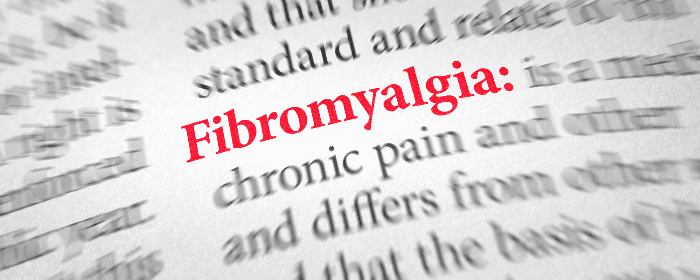
by admin | May 25, 2022 | Health Awareness
At some point in your life, you have probably heard that cell phones and microwaves can cause all sorts of health problems, including cancer.
Some people claim that the electromagnetic fields, or EMFs, that are emitted by certain devices and household appliances give off radiation that has an ionizing effect on your body’s cells. But is there any truth to these claims? Keep reading to find out.
Understanding the Electromagnetic Spectrum
EMFs don’t come in just one form; they fall somewhere on the electromagnetic spectrum. The electromagnetic spectrum illustrates all of the different types of electromagnetic radiation and organizes them based on their wavelength and energy.
On one end of the spectrum are radio waves, which have the lowest energy and frequency and the longest wavelength. This makes them the least harmful type of electromagnetic radiation.
On the opposite end of radio waves are gamma rays, which are the most powerful form of electromagnetic radiation. As you go down the spectrum, the forms of radiation increase in energy and frequency while the wavelengths shrink.
When to Worry About EMF Exposure
Most of your household appliances and devices, including your cell phone, television, microwave, hair dryer, and computer, fall very low on the electromagnetic spectrum. Low-frequency EMFs give off an extremely mild form of radiation that is non-ionizing and generally considered to be safe for humans.
The only form of EMF exposure you should worry about is large doses of high-frequency EMFs, such as gamma rays, X-rays, and UV rays.
Thankfully, most people never come in contact with gamma rays, and in medical settings, X-ray exposure is always minimized. However, you can take steps to protect against UV radiation from the sun, such as limiting your direct sun exposure and always applying adequate sunscreen.
For more health awareness blogs, please visit https://www.stemedix.com/blog.

by admin | May 18, 2022 | Health Awareness
The American diet may be convenient, but it also allows for vitamin and mineral deficiencies. The symptoms of many vitamin deficiencies may develop slowly, so you could be unaware of any concerns until they interfere with your life.
The five most common vitamin deficiencies involve iron, calcium, and vitamins B6, B12, and D.
1. Iron
Iron deficiencies are a common cause of anemia, which is characterized by a lack of healthy red blood cells. Iron helps the body produce a part of red blood cells called hemoglobin.
Symptoms of an iron deficiency include:
- Brian fog
- Fatigue
- Symptoms of depression
- Muscle cramping
You can ensure your body receives iron from your diet by including beef, chicken, eggs, leafy greens, lentils, and beans.
2. Calcium
Calcium deficiencies may cause bones to become weak and brittle. Calcium also supports nerve and muscle function.
Symptoms of a calcium deficiency include:
- Muscle cramping and spasms
- Muscle aches and pains
- Irregular heartbeat
- Poor appetite
Dairy products, soy, almonds, leafy greens, and sardines all serve as excellent sources of calcium.
3. Vitamin B6
Bodies don’t store vitamin B6, so it’s essential to replenish it with your diet daily. Vitamin B6 supports the body’s immune system, the heart, and the brain. It’s also part of the process that converts the food you eat into energy.
Symptoms of a vitamin B6 deficiency include:
- Skin rashes
- Fatigue
- Depression
- Weakened immune system
- Confusion
Vitamin B6 is found in animal and plant-based foods, including tuna, salmon, dark leafy greens, bananas, cantaloupe, and poultry.
4. Vitamin B12
Vitamin B12 serves many essential roles in the body, including aiding in creating red blood cells and maintaining appropriate levels of homocysteine, which can reduce the risk of heart attack or stroke.
Patients with a vitamin B12 deficiency may experience:
- Irritability
- Fatigue
- Struggles with balance
- Yellowing skin
- Dementia
- Infertility
Vitamin B12 is naturally found in fish, meat, poultry, and dairy products. In addition, fortified breakfast cereals and nutritional yeasts serve as sources of vitamin B12.
5. Vitamin D
Vitamin D is instrumental for bone and immune system health. Those who don’t get enough vitamin D may be more prone to bone fractures and softening.
Symptoms of a lack of vitamin D include:
- Muscle weakness
- Fatigue
- Back pain
- Frequent illnesses
To ensure your body gets enough vitamin D, the best foods to eat are fatty fish and fish liver oils. You can get vitamin D from egg yolks, fortified dairy products, cereals, and spending time in the sun.
Visit our practitioner-grade supplement sites for quality sources of vitamins:
https://stemedix.metagenics.com/
https://stemedix.ehealthpro.com/

by admin | May 11, 2022 | Health Awareness
The rising summer temperatures may offer more opportunities to enjoy the outdoors and come with an increased risk of heatstroke. Planning for hot days allows you to enjoy the longer, warmer days without suffering when the temperatures rise.
Who Is at Risk of Medical Concerns in the Heat?
Anyone can become ill from too much time in extreme temperatures. However, some people are more likely to suffer from medical concerns stemming from too much time in the heat. These people include:
- Those with chronic medical conditions
- Those with mental illness
- People on certain medications
- Those with limited mobility
- People over the age of 65
- Babies and young children
- Overweight or obese people
- Those who work or exercise outdoors
Additionally, people who are more accustomed to cooler climates may be more affected by hotter temperatures.
How to Stay Safe in the Heat
When temperatures rise, people are more likely to become dehydrated, which can cause cramps, exhaustion, or heat stroke. Some tips for staying healthy in the heat include:
- Drink plenty of water
- Eat foods high in water
- Wear sunscreen
- Stay in the shade
- Avoid being out in the hottest part of the day
- Wear light-colored, loose-fitting clothing
- Avoid strenuous activities
- Use wet towels or cool (not cold) showers to keep from overheating
It’s essential to check on friends and family in times of extreme heat and have them check on you.
Prepare for High Temperatures
Right now is the time to ensure your safety in extreme temperatures. Prevent any issues when temperatures rise by taking the time to ensure your safety and comfort in cases of extreme heat. Some actions to take include:
- Knowing the signs of heat-related illnesses
- Identifying cool areas in your community where you can go
- Purchase window deflectors to reflect heat outside
- Install window air conditioners and insulate around them
If you have a whole-house air conditioner, check your unit to ensure it doesn’t need any maintenance or repairs before summer temperatures rise.
If You Experience Heat-Related Symptoms
If you experience heat cramps or heat exhaustion signs, go to a cooler location and remove excess clothing. Sip sports drinks or water, and call a healthcare provider if symptoms worsen or persist for more than an hour.
For more health awareness blogs, please visit www.stemedix.com/blog.

by admin | May 4, 2022 | Health Awareness
You know how important it is to stay hydrated, but do you know all of the ways your body is trying to tell you it needs more water? Feeling thirsty is the most obvious sign, but there are other important signals that you need to increase your fluid intake.
1. Bad Breath
Dehydration can lead to a lack of saliva, and a dry mouth is the perfect environment for bacterial overgrowth. That’s why morning breath can be so unpleasant. If you feel like morning breath stays with you all day long, forget the mints and reach for a glass of water.
2. Muscle Cramps
A lack of fluid causes the body to heat up and the muscles to work harder. Changes in electrolyte levels can also lead to muscle cramps. If you’re experiencing cramping, especially after workouts, consider rehydrating with sports drinks that have added electrolytes.
3. Food Cravings
You may blame it on your sweet tooth, but those cravings for sweet or salty snacks may be caused by your body’s difficulty breaking down glycogen. Dehydration makes it hard for your organs to release glycogen which, in turn, sends signals to your brain that more glycogen is needed.
4. Headaches
Before opening the aspirin bottle the next time you have a headache, try drinking a glass of water. Even mild dehydration can trigger headaches, including migraine headaches.
5. Fever and Chills
Heat illness, which is caused by dehydration, may present as fever and chills. Cooling down as quickly as possible is crucial, and increasing fluids is the best way to accomplish that. In addition to getting out of the heat and applying ice packs or cool cloths, drink extra water to help cool your organs and internal systems.
6. Dry Skin
Dry skin can be the result of unlucky genetics, but it is also a symptom of dehydration. If you’ve noticed your skin is feeling dry and itchy, increase your water intake and schedule a consultation for a regenerative medicine facial.
Staying Hydrated
Most adults should drink at least eight glasses of water per day, not including coffee, tea, or other caffeinated beverages. Remember that sports drinks and other flavored drinks may include sugar and other ingredients that can be harmful to your health if overconsumed. Try adding fresh herbs like mint or slices of citrus fruit to your water for variety.
For more health awareness blogs, please visit https://www.stemedix.com/blog.

by admin | Apr 27, 2022 | Health Awareness
Traveling should be a time for relaxation and enjoyment, but for people with chronic illnesses, it can bring stress and uncertainty. From ensuring you’ve packed necessary medications to managing your symptoms in changing environments, exploring new places isn’t always easy when you have a chronic condition. Here, we discuss some tactics for navigating the challenges of traveling with success.
Check-In With Your Doctor
Prior to your trip, schedule a visit with your doctor to discuss any pre-vacation medical arrangements to be made. Some people with chronic illnesses like to travel with a note from their doctor that details all of their prescriptions and dosages. If you should find yourself without medications or needing an unexpected refill, this information will be helpful to have on hand.
Another good practice is to ask your doctor if there are any preventive medications you should consider bringing on your trip. Some chronic illnesses make individuals more prone to developing infections, so having antibiotics at your disposal could also help you ensure a healthy, stress-free trip.
Set Medication Reminders
Your medications may be some of the last items you pack, so set a reminder on your phone or put a note on your door to make sure you’ve packed these critical essentials. Also, because your daily routine will be altered when you’re in transit and at your destination, you should set a daily medication reminder on your phone to avoid missing any doses.
Here’s another helpful tip for packing medications: put some in your carry-on and some in your checked luggage. Should either get lost, you won’t be entirely without your supply.
Take Breaks as Needed
When planning a trip, it can be tempting to jam-pack an itinerary with sightseeing and other activities. Just be sure to pencil in some break times to prevent exhaustion. Consider making restaurant reservations to hit pause during your adventures, or map out excursions strategically so you can take breaks at nearby restrooms, benches, and other facilities. If you’re feeling great and don’t need to take breaks, that’s fine – but knowing they’re scheduled if you need them can give you peace of mind.
Research Your Destination
Some chronic illnesses require certain accommodations that restaurants and hotels may or may not have. If you have celiac disease or another condition with dietary restrictions, for instance, you’ll want to do a little research on the local eateries to ensure there are menu options available for you to enjoy. Likewise, if you have any medical or mobility equipment which may require special accommodations, make sure your public transportation options and hotel are able to accommodate your needs.
Purchase Travel Insurance
Unforeseen circumstances can derail anyone’s travel plans. For individuals with chronic illnesses, however, flare-ups and fluctuations could increase the likelihood of last-minute changes in plan. Luckily, trip insurance can help you recover some of the costs should you need to cancel your trip, or provide you with the option of rescheduling for a better time.
Whether you’re planning a relaxing beachside getaway or an adventurous outdoor retreat, these tips can help prepare you for whatever could come your way on vacation. Although it may require a bit more planning upfront, people living with chronic illnesses can have an enjoyable travel experience, too.
For more health awareness blogs, please visit www.stemedix.com/blog.

by admin | Apr 20, 2022 | Health Awareness
Fibromyalgia affects up to four million adults in the U.S. alone. Unfortunately, fibromyalgia has no cure, and those who suffer from this chronic condition are only offered treatments that work to reduce symptoms to improve their quality of life.
As researchers continue to study this perplexing condition, they discover new connections between fibromyalgia and the immune system.
What Is Fibromyalgia?
Fibromyalgia is a chronic condition that healthcare providers still struggle to understand. Symptoms of fibromyalgia are similar to many other illnesses and include:
- Muscle and bone pain
- Fatigue
- Sensitivity and tenderness
- Sleep disruptions
- Brain fog
There are no tests to diagnose fibromyalgia definitively, so the condition is often misdiagnosed.
What Causes Fibromyalgia?
While the cause of fibromyalgia is unknown, researchers are getting closer to understanding the condition through its connection to the immune system.
Patients with rheumatoid arthritis and lupus, both autoimmune diseases, are more likely to have fibromyalgia. Autoimmune diseases occur when the body mistakenly unleashes its immune response against the healthy cells of organs and tissues.
Fibromyalgia can occur in conjunction with other autoimmune diseases. Additionally, fibromyalgia symptoms like fatigue and brain fog often overlap with autoimmune disorders.
These factors led researchers to theorize that fibromyalgia may be an autoimmune disorder, even though it doesn’t cause inflammation, a common symptom of autoimmune diseases.
In a recent study, mice injected with auto-antibodies from people with fibromyalgia began to experience fibromyalgia-like symptoms. This new development may lead to new tests to diagnose fibromyalgia and new treatments for those suffering from the condition.
Living with Fibromyalgia
Patients with fibromyalgia suffer from the pain, fatigue, and other symptoms associated with the condition, in addition to common social misconceptions. While fibromyalgia doesn’t have a cure, symptoms are often well-managed through diet and exercise, medications, alternative therapies, and stress relief.
Patients are exploring regenerative medicine, also known as stem cell therapy, to help manage their symptoms experienced with fibromyalgia or an autoimmune condition. Stem cells are the building blocks and, specifically, mesenchymal stem cells have the regenerative properties to differentiate into any cell type while also addressing pain and inflammation within the body.







 St. Petersburg, Florida
St. Petersburg, Florida
